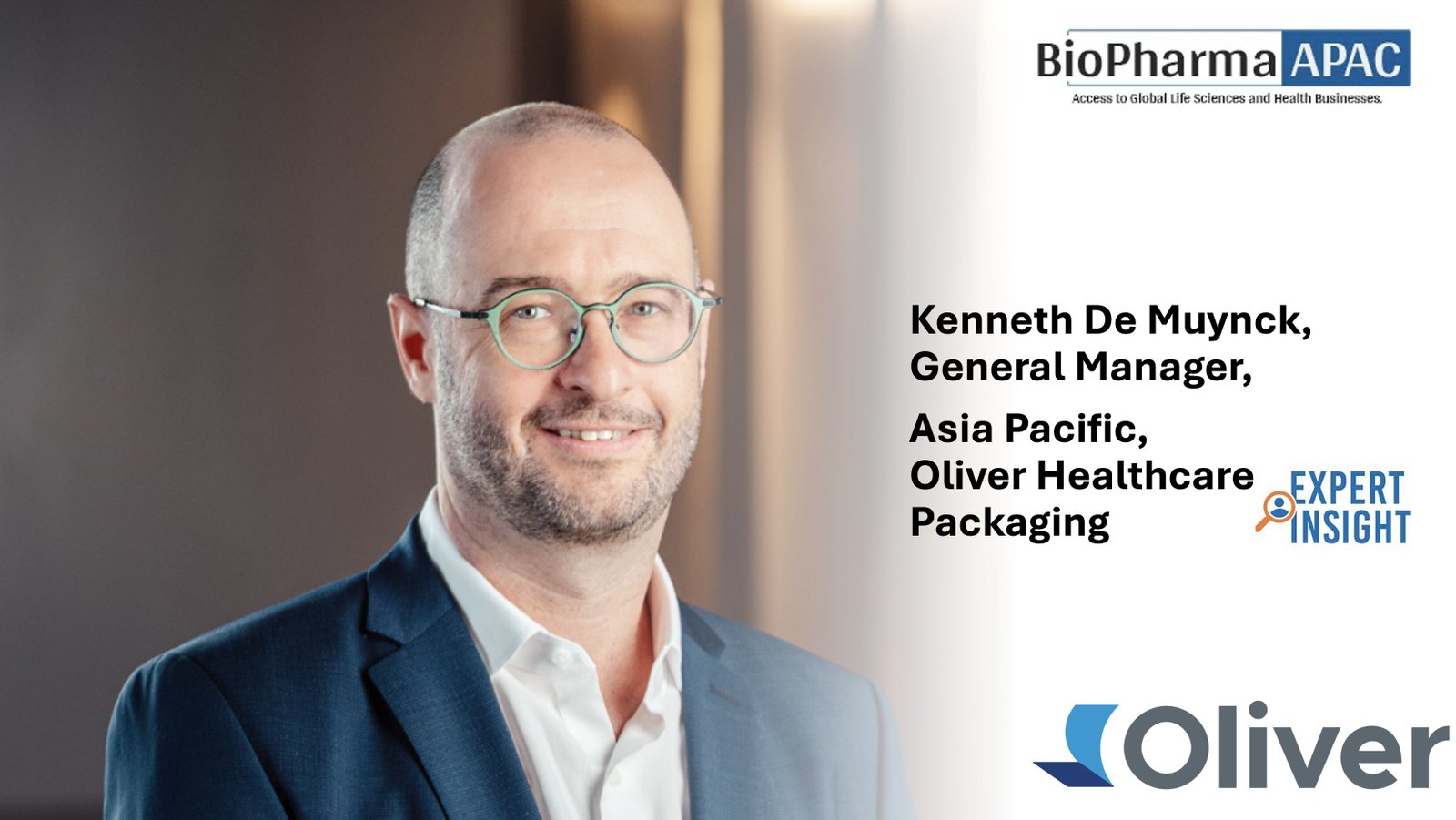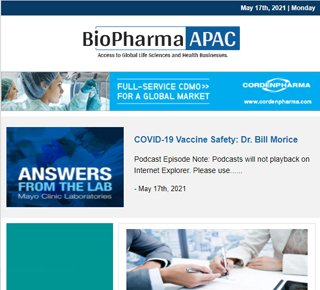Research Highlights Cutting-Edge New Treatments for Blood Disorders
12 December 2022 | Monday | News

Image Source : Public Domain
New research being presented at the 64th American Society of Hematology (ASH) Annual Meeting and Exposition focuses on a variety of approaches for several hematologic diseases to improve outcomes and quality care.
"These studies represent a potpourri of novel approaches and new drug targets across classical hematology, malignant disease, and genetic disorders," said press briefing moderator Stephanie Lee, MD, MPH of Fred Hutchinson Cancer Center and former president of ASH. "These are all exciting advances and give a glimpse into the incredible breadth and scope of research inquiries to find better treatments and even cures, especially for patients who are heavily pre-treated and don't have a lot of other treatment options."
The first study shows additional disease control and promising response rates for individuals with treatment-refractory multiple myeloma by adding an immunotherapy that has a different target than existing therapies.
In the second study, researchers report that more than half of patients with immune thrombocytopenia (ITP), a rare chronic disorder that causes dangerously low platelet levels, treated with efgartigimod experienced improvements in their platelet count, cutting the risk of dangerous bleeding. According to Dr. Lee, the drug's novel mechanism may be generalizable to other diseases.
The third study finds that people with beta thalassemia who received one-time gene therapy were free of burdensome transfusions and had marked improvements in their quality of life. "These long-term data show that this approach could be a curative, one-time therapy for patients," Dr. Lee said.
The fourth study, which looked at the cost-effectiveness of gene therapy for sickle cell disease (SCD) using innovative modeling that adjusts for health inequities, suggests that gene therapy could be an equitable therapeutic strategy for all people with SCD.
Of course, the drugs studied will be costly, so the question of their implementation into practice and equity in terms of access will need to be addressed, Dr. Lee added.
The press briefing will take place on Saturday, December 10, at 10:30 a.m. Central time in press briefing room 346, Ernest N. Morial Convention Center.
Talquetamab Generates High Response Rate in Patients with Hard-to-treat Multiple Myeloma
157: Talquetamab, a G Protein-Coupled Receptor Family C Group 5 Member D x CD3 Bispecific Antibody, in Patients with Relapsed/Refractory Multiple Myeloma (RRMM): Phase 1/2 Results from MonumenTAL-1
In an early-phase trial, nearly three-quarters of patients who received talquetamab, a first-in-class experimental immunotherapy for multiple myeloma, saw a significant reduction in cancer burden within a few months. The study participants had all been previously treated with at least three different therapies without achieving lasting remission, suggesting talquetamab could offer new hope for patients with hard-to-treat multiple myeloma.
"This means that three-quarters of these patients are looking at a new lease on life," said Ajai Chari, MD, of The Tisch Cancer Institute at Mount Sinai in New York. "We're hoping that this will soon become available so that patients can benefit."
Talquetamab binds to both T cells and multiple myeloma cells. This activates an immune response to destroy myeloma cells by bringing T cells to the cancer, a strategy that researchers described as "bringing your army to the enemy." It also uses a different target than other approved therapies; in this case, the target is a receptor expressed on the surface of cancer cells known as GPRC5D.
Multiple myeloma is a blood cancer that forms in plasma cells. Several treatments are available, but the prognosis can be very poor and many patients survive less than a year if the disease doesn't respond to therapy or returns after several different treatments.
The study enrolled a total of 288 patients who were unable to tolerate existing therapies or showed disease progression after at least three multiple myeloma therapies. After an initial phase generated encouraging results in terms of safety and efficacy, researchers began enrolling additional patients to assess the agent's efficacy with two different dosing regimens—0.4 mg/kg weekly and 0.8 mg/kg every other week. Data from patients who had received these same dosing regimens in the first phase were included in the analysis for the second phase.
Seventy-four percent of those receiving 0.4 mg/kg of talquetamab weekly and 73% of those receiving 0.8 mg/kg every other week saw a measurable improvement of their cancer following treatment, the primary endpoint for the trial's second phase. More than 30% of patients in both groups had a complete response (no detection of myeloma-specific markers) or better and nearly 60% had a "very good partial response" or better (indicating the cancer was substantially reduced but not necessarily down to zero). The median time to a measurable response was approximately 1.2 months in both dosing groups and the median duration of response is 9.3 months to date with weekly dosing. Researchers are continuing to collect data on the duration of response in the group receiving 0.8 mg/kg every other week and for patients in both dosing groups who had a complete response or better.
Side effects were relatively frequent, but typically mild. About three-quarters of patients experienced cytokine release syndrome (a sign of immune activation common with therapies that redirect T cells, typically causing a fever); 60% experienced skin-related side effects such as rash; about half reported taste changes; and about half reported nail disorders. Researchers said 5-6% of patients stopped talquetamab treatment early due to side effects.
The response rate observed in this cohort, which Dr. Chari explained is higher than that of most currently accessible therapies, suggests talquetamab could offer a viable option for patients with hard-to-treat myeloma, offering a chance to extend patient lifespans.
In a separate cohort, 51 patients who had previously received therapies that redirect T cells showed a response to talquetamab. In addition, several other studies are underway to assess the use of talquetamab in combination with other existing and investigational multiple myeloma therapies, which could allow patients to have similar or improved benefits, potentially in earlier stages of treatment.
This study was funded by Janssen Research & Development LLC.
Ajai Chari, The Tisch Cancer Institute at Mount Sinai, will present this study during an oral presentation on Saturday, December 10, 2022, at 12:00 noon in R02-R05.
Improvements in Platelet Count Observed in More Than Half of Patients with ITP Treated with Efgartigimod
3: Efficacy and Safety of Intravenous Efgartigimod in Adults with Primary Immune Thrombocytopenia: Results of a Phase 3, Multicenter, Double-Blinded, Placebo-Controlled, Randomized Clinical Trial (ADVANCE IV)
More than half of patients with immune thrombocytopenia (ITP), a rare chronic disorder that causes dangerously low platelet levels, treated with the novel agent efgartigimod (EFG) experienced improvements in their platelet count. For people with ITP, this improvement could mean less time away from work or school, fewer limitations on activities due to a risk of bleeding caused by trauma, and less worrying about spontaneous bleeding such as nosebleeds.
"This is exciting news because existing treatments fail to improve platelet counts for as many as 30% of adults with chronic ITP," said Catherine Broome, MD, associate professor of medicine at the Georgetown Lombardi Cancer Center in Washington, DC, and the study's principal investigator. "The trial results show that the therapy was both efficacious and well tolerated."
ITP is an autoimmune disease in which the body produces immunoglobulin G (IgG) autoantibodies that bind to and increase the clearance of platelets (blood cells that help the body control bleeding) from blood circulation. Healthy people have a platelet count of between 150,000 and 400,000 per microliter of blood, whereas patients with ITP often have a platelet count of less than 50,000 per microliter and in some cases less than 20,000. Patients enrolled in this study had an average platelet count of less than 30,000 and at least two prior ITP treatments or one prior and one concurrent treatment.
ITP can be treated in a variety of ways, including with medications that suppress the immune system and decrease the production of IgG autoantibodies. Steroids are one of the most commonly used therapies, but long-term use of these medications can cause serious side effects such as weight gain, insomnia, and loss of bone density. EFG is a novel medication that reduces levels of IgG, including the autoantibodies that increase the clearance of platelets in patients with ITP.
In the ADVANCE IV study, Dr. Broome and her colleagues enrolled 131 patients in six countries. The patients' average age was 50, and 54% were women. The mean time since their ITP diagnosis was about 10 years, and two-thirds had received three or more previous ITP therapies that had either not worked or had caused intolerable side effects. Study participants were randomly assigned to receive intravenous infusions of either EFG or a placebo for 24 weeks; two thirds received EFG and one third the placebo. Infusions were given weekly for four weeks; after that, depending on response, some patients switched to getting an infusion every two weeks. The study was double blinded, meaning that neither the patients nor their doctors knew who was receiving EFG versus the placebo.
The study's primary endpoint was the number of participants who maintained a platelet level of more than 50,000 per microliter during weeks 19 through 24. Secondary endpoints included, among others, the number of bleeding episodes and the proportion of participants who had sustained platelet levels above 50,000 for at least six of the final eight weeks of the study.
At 24 weeks, 21.8% of participants treated with EFG, compared with 5% of those who received a placebo, met the primary endpoint. More than half (51.2%) of patients who received EFG, compared with 20% of those in the placebo group, met internationally recognized criteria for response to ITP, which include measuring bleeding episodes in addition to platelet count.
Adverse events such as bruising, headaches, and blood in urine occurred at roughly the same frequency in both groups of patients. Serious AEs were reported in 8.1% (7/86) of participants in the EFG group and in 15.6% (7/45) in the placebo group; however, none were treatment-related. These included bleeding or events related to bleeding (n=5), infections (n=4), and worsening primary ITP (n=3).
The patients treated with EFG are now being followed for a minimum of two years in a follow-up study to continue to evaluate safety and long-term platelet response. In addition, another phase III trial is currently testing a formulation of EFG that can be injected under the skin (subcutaneously) rather than into a vein. If this formulation is shown to be effective, Dr. Broome said, it could mean that patients could administer their own injections of the medication instead of having to go to a health care facility every week or two to receive the medication intravenously.
The study was funded by argenx, which manufactures EFG.
Catherine Broome, MD, Georgetown University School of Medicine, will present this study during a plenary presentation on Sunday, December 11, 2022, at 2:00 p.m. Central time in Hall E.
Patients Undergoing Gene Therapy for Beta Thalassemia Achieve Sustained Transfusion Independence, as well as Improved Quality of Life
2348: Long Term Outcomes of 63 Patients with Transfusion-Dependent β-Thalassemia (TDT) Followed up to 7 Years Post-Treatment with betibeglogene autotemcel (beti-cel) Gene Therapy and Exploratory Analysis of Predictors of Successful Treatment Outcomes in Phase 3 Trials
3665:Long-Term Patient-Reported Outcomes Following Treatment with betibeglogene autotemcel in Patients with Transfusion-Dependent β-Thalassemia
In an international study – the largest to date of gene addition therapy for an inherited blood disorder – more than 80% of evaluable patients with a severe genetic condition, who had been dependent on regular blood transfusions to stay alive, remained transfusion-free three years after receiving a single infusion of their own blood-forming stem cells that had been altered to correct the genetic mutation that caused their disease. A separate study that assesses patient-reported outcomes and quality of life showed marked improvements in patients' ability to work, attend school, and be physically active after gene therapy. Among patients who were attending school, absenteeism caused by beta thalassemia symptoms declined by about half.
The patients have a severe form of beta thalassemia, an inherited disease in which the body makes too little hemoglobin, the molecule that, in red blood cells, carries oxygen to the body's cells. The disease is caused by a wide array of mutations in the beta-globin gene, which carries the instructions for the body to manufacture one of the proteins that make up hemoglobin. Patients in the gene therapy study received their own blood-forming stem cells that had been genetically modified by adding one or more healthy copies of the beta-globin gene.
"The main message from our findings is that therapy to add a healthy gene to the stem cells is a valid, safe, and potentially curative treatment option for many patients with beta thalassemia," said study author Franco Locatelli, MD, professor of pediatrics at IRCCS Bambino Gesù Children's Hospital, Catholic University of the Sacred Heart, in Rome, Italy. "Gene therapy resulted not only in sustained transfusion independence, but also in improved quality of life."
In beta thalassemia, a shortage of hemoglobin leads to a shortage of healthy red blood cells, causing anemia, symptoms of which include fatigue, weakness, shortness of breath, dizziness, and headaches. People with the most severe form of the disease need lifelong regular blood transfusions, an adverse effect of which is iron overload, namely an excess level of iron in the body. Over time, despite the regular use of chelation therapy to reduce iron levels, iron overload can cause severe damage to multiple organs, including the heart, liver, pancreas, and joints, leading to complications such as heart failure, cirrhosis, diabetes, and osteoarthritis.
While relatively rare in the United States, beta thalassemia is common in other parts of the world, including the eastern Mediterranean, Middle East, Africa, and South Asia. It affects men and women about equally, and symptoms typically appear by age two.
In the analysis of long-term outcomes, 63 patients enrolled in four consecutive studies first underwent a procedure to harvest their blood-forming stem cells. Each patient's cells were sent to a laboratory, where healthy copies of the beta-globin gene were inserted into them. The genetically modified cells were frozen, shipped back, thawed, and re-infused into patients. Before the infusion, the same patients were treated with high-dose chemotherapy to kill their remaining unhealthy stem cells.
After completing two years of follow-up, patients could enroll in a long-term study to continue follow-up for up to 13 more years. The current study reports results for patients who have been followed for up to seven years (median of 3.5 years) since they received their genetically modified stem cells.
Forty-nine patients achieved transfusion independence, which was defined in the study as not needing a transfusion of red blood cells for at least one year while maintaining a hemoglobin level greater than 9 g/dL; all of them remained transfusion independent at three years of follow-up. The percentage of evaluable patients who completed the study and achieved transfusion independence was 68% in the two initial studies and 89% in two more-recent studies that used an optimized approach to prepare the genetically modified cells.
In a separate analysis of health-related quality of life, 93.8% of patients were working or looking for work three years after receiving gene therapy, whereas 68.8% had been doing so before gene therapy. Among patients who were in school, 44.4% reported missing school due to their illness compared with 83.3% who had reported missing school before gene therapy. Eighty percent of patients reported improvement in physical activity three years after gene therapy.
Eleven patients (18%) experienced one or more adverse events that may have been related to the treatment. No patient died because of the treatment and no cancers or other severe adverse effects were recorded.
The therapy, betibeglogene autotemcel (known as beti-cel), was approved by the U.S. Food and Drug Administration in August as the first cell-based gene addition therapy for the treatment of adult and pediatric patients with beta-thalassemia who require regular red blood cell transfusions.
While beta thalassemia can be cured by a transplant of healthy stem cells from a matched sibling donor, this treatment option is not available to the 75% of patients who lack a matched donor, Dr. Locatelli said. "Gene therapy is potentially applicable to a much larger number of patients because they don't need to have a matched donor," he said.
These studies were funded by bluebird bio, the maker of beti-cel.
Franco Locatelli, IRCCS Bambino Gesù Children's Hospital, Catholic University of the Sacred Heart, will present these studies during poster presentations on Sunday, December 11, 2022, at 6:00 p.m. and Monday, December 12, 2022, at 6:00 p.m. Central Time in Hall D.
Gene Therapy Found to Be an Equitable, Potentially Cost-Effective Option for Individuals Living with Sickle Cell Disease in the U.S.
581: Gene Therapy Equity in Sickle Cell Disease: Distributional Cost-Effectiveness Analysis (DCEA) of Gene Therapy Vs. Standard-of-Care in Patients with Sickle Cell Disease in the United States
Gene therapy can be an equitable and potentially cost-effective therapeutic option for people in the United States with SCD despite a projected per-patient cost of over $2 million for one-time treatment, according to researchers, who conducted the first study to try to answer this question using a novel approach that factors health disparities into SCD patient care.
"In the United States, SCD predominantly affects African Americans, who have historically been a very marginalized population when it comes to health care," said George Goshua, MD, MSc, the study's principal investigator and an assistant professor of medicine at Yale University School of Medicine. "Our study shows that, when we compare the costs of gene therapy and existing standard-of-care treatment for SCD using a technique that accounts for historical health disparities, gene therapy could be an equitable therapeutic strategy for all patients with SCD, whether their disease is mild, moderate, or severe."
SCD is the most common inherited red blood cell disorder in the United States, affecting an estimated 100,000 individuals, mostly African Americans. In people with SCD, the red blood cells, which are normally round, become crescent or sickle shaped. As these cells travel through the bloodstream, they can get stuck, cutting off blood flow and causing intense pain. People with SCD suffer from an array of physical complications, including acute pain crises, joint and organ damage, stroke, and reduced life expectancy. Additionally, this population is often stigmatized due to poor understanding among health care professionals and the public of the life-limiting effects of the disease.
This study, a collaboration between the Yale University School of Medicine and The Harvard T.H. Chan School of Public Health, is believed to be the first in hematology to use a technique known as distributional cost-effectiveness analysis (DCEA), which accounts for historical health disparities by adding an "equity weight" to the calculation of a treatment's cost effectiveness. An equity weight, Dr. Goshua explained, is "a way of quantifying how much we prioritize health care equity." Because this has never been studied in SCD, he and his colleagues used a range of equity weights that have been used in other DCEA studies in the United States.
The researchers factored these equity weights into their analysis of 10 years of data on the annual cost of health care for patients with SCD who had private health insurance and were receiving any of several standard therapies, such as the drug hydroxyurea, antibiotics, blood transfusions, and stem cell transplantation. They examined factors including patients' gender and how frequently they were hospitalized for an acute pain crisis.
Dr. Goshua explained that several assumptions were made: that one-time gene therapy would cost $2.1 million (based on the cost of gene therapies for other diseases that have recently been approved by the U.S. Food and Drug Administration); that gene therapy would be 100% effective in achieving disease remission; and that it would be offered to all patients with SCD in the United States aged 12 and older (the age limit applied in randomized trials of gene therapy to date).
Based on these assumptions, the investigators calculated that gene therapy would result in 25.5 discounted lifetime quality-adjusted life years (QALYs) compared with 16.0 for standard therapy. (QALYs, a measure of disease burden, are widely used to assess the value of medical interventions; one QALY equates to one year in perfect health.) They concluded that gene therapy "can be an equitable therapeutic strategy for patients with SCD in the United States" at a cost of between $1.4 million and $3.0 million per patient, depending on the equity weight used.
A limitation of the study, Dr. Goshua said, is the assumption that gene therapy for SCD would be 100% effective. "We don't yet have enough long-term data on effectiveness," he said. "If gene therapy for SCD turns out to be less than 100% effective – that is, if some people who undergo gene therapy relapse and need additional treatment – the maximum cost at which gene therapy for SCD would be an equitable therapeutic strategy would decrease."
George Goshua, MD, MSc Yale University School of Medicine, will present this study during an oral presentation on Sunday, December 11, 2022, at 1:00 p.m. in R06-R09.
Additional press briefings will take place throughout the meeting on health equity, advances in blood cancer research and care, optimizing pediatric care, and selected late-breaking abstracts. For the complete annual meeting program and abstracts visit www.hematology.org/annual-meeting. Follow ASH and #ASH22 on Twitter, Instagram, LinkedIn, and Facebook for the most up-to-date information about the 2022 ASH Annual Meeting.
The American Society of Hematology (ASH) (www.hematology.org) is the world's largest professional society of hematologists dedicated to furthering the understanding, diagnosis, treatment, and prevention of disorders affecting the blood. For more than 60 years, the Society has led the development of hematology as a discipline by promoting research, patient care, education, training, and advocacy in hematology. ASH's flagship journal, Blood (www.bloodjournal.org), is the most cited peer-reviewed publication in the field, and Blood Advances (www.bloodadvances.org), is the Society's online, peer-reviewed open-access journal.
Most Read
- The New AI Gold Rush: Western Pharma’s Billion-Dollar Bet on Chinese Biotech
- Top 25 Biotech & Biopharma Leaders in Sustainable Innovation, 2025
- China’s Biopharma Dealmaking Surges in H1 2025, Driven by Record Licensing and Oncology Focus
- Chikungunya in China: How a “Forgotten” Arbovirus Found the Perfect Storm
- How Innovation Gaps in Biopharma Raise New Safety Concerns
- Smart Implants and the Future of Musculoskeletal Injury Treatment
- How Ethical Gaps in Psychiatry Could Undermine Biopharma Progress
- The Evolving Landscape of Women’s Health Innovation in the Asia-Pacific
- Using NLP-Driven Decision Support in Emergency Health Assistance
- Taiwan Steps Into the Global Spotlight With a New Cancer Therapy
- The Role of Unique Device Identification (UDI) in Tracing Medical Device Safety
- The Importance of a Patient’s Mental Health During Clinical Trials
Bio Jobs
- The State of Biotech and Life Science Jobs in Asia Pacific – 2025
- Avantor’s New CEO Ligner Aims to Unlock Global Potential and Deliver Shareholder Value
- AstraZeneca Commits $50 Billion to U.S. Expansion by 2030 in Biggest-Ever Global Investment
- Thermo Fisher, SAMRC, and South Africa’s Department of Science and Innovation Launch CATIR to Nurture Next-Gen Scientists
- Cube Biotech Appoints Former Sartorius CEO Dr. Joachim Kreuzburg to Board of Directors
- FDA’s AI Transition Marks a Turning Point in Drug Review: Industry Faces Pressure to Adapt Amid 20% Workforce Cut
- WuXi XDC Completes Mechanical Build of Singapore Bioconjugate Manufacturing Hub
News
Editor Picks











